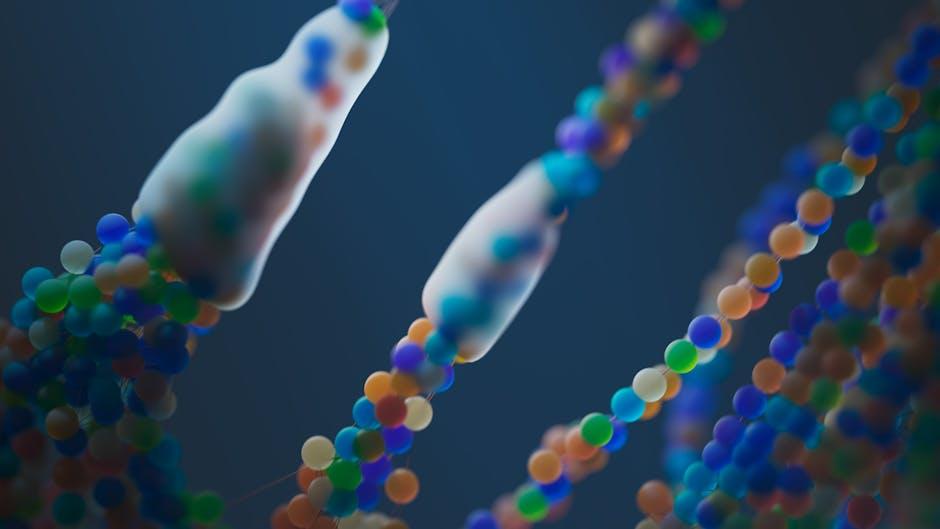The Science Behind Retinol and Its Benefits
In the ever-evolving world of skincare, few ingredients have garnered as much attention and acclaim as retinol. Often hailed as a miracle worker for its transformative effects on the skin, this powerful compound has become a staple in beauty regimens worldwide. But beyond the glossy magazine endorsements and influencer testimonials lies a fascinating realm of science that explains why retinol is revered by dermatologists and skincare enthusiasts alike. In this article, we will embark on a journey to uncover the science behind retinol, delving into its origins, its mechanisms of action, and the myriad benefits it offers for achieving radiant, youthful skin. Whether you’re a seasoned skincare aficionado or a curious newcomer, join us as we explore the compelling story of retinol and its profound impact on the quest for beauty and skin health.
Understanding Retinol: A Deep Dive into Its Molecular Structure
Retinol, a derivative of Vitamin A, is celebrated in the skincare world for its transformative effects. At the molecular level, retinol is a small, lipophilic molecule, which means it can easily penetrate the skin’s lipid barrier. This attribute allows it to work its magic beneath the surface, where it influences cell behavior. The molecular structure of retinol consists of a long hydrocarbon chain with a hydroxyl group, making it an alcohol. This structure is crucial for its role in promoting skin renewal and collagen production. By binding to retinoic acid receptors in the skin, retinol influences gene expression, leading to increased cell turnover and a reduction in the appearance of fine lines and wrinkles.
- Penetration Ability: Its small size allows for deep skin absorption.
- Influence on Cell Behavior: Acts at a genetic level to encourage cell turnover.
- Collagen Production: Stimulates fibroblasts, enhancing skin firmness.
Understanding the molecular intricacies of retinol not only highlights its efficacy but also underscores why it remains a staple in anti-aging regimens. Its ability to convert into retinoic acid within the skin amplifies its potency, making it a powerful tool for both dermatologists and skincare enthusiasts alike. As a result, retinol continues to be a key ingredient in targeting acne, hyperpigmentation, and the visible signs of aging.
How Retinol Works: Unraveling the Biological Mechanisms
At the heart of retinol’s transformative prowess lies its ability to interact with skin cells on a molecular level. When applied, retinol penetrates the skin’s surface, reaching the deeper layers where it is converted into retinoic acid. This active form binds to specific nuclear receptors, triggering a cascade of cellular processes. As a result, it enhances cell turnover, encourages the shedding of old skin cells, and promotes the growth of new ones. This not only improves skin texture but also helps reduce the appearance of fine lines and wrinkles.
Moreover, retinol plays a crucial role in collagen synthesis. Collagen is a vital protein that maintains the skin’s firmness and elasticity. As we age, collagen production naturally declines, leading to sagging and wrinkles. Retinol stimulates fibroblasts, the cells responsible for collagen production, thereby boosting collagen levels. This action helps in restoring the skin’s youthful structure. Additional benefits include:
- Regulating oil production: Helps in reducing acne outbreaks.
- Brightening the complexion: Fades hyperpigmentation and evens out skin tone.
- Strengthening the skin barrier: Enhances the skin’s resilience against environmental stressors.

The Benefits of Retinol: From Skin Renewal to Anti-Aging
Retinol, a derivative of vitamin A, has long been celebrated for its transformative effects on the skin. At the cellular level, it accelerates skin renewal by stimulating the production of new skin cells. This enhanced turnover can lead to a brighter, more even complexion and reduce the appearance of pigmentation and acne scars. Additionally, retinol is a powerful ally in the fight against aging, thanks to its ability to boost collagen production. Collagen is essential for maintaining skin elasticity and firmness, and its increased presence can significantly diminish the appearance of fine lines and wrinkles.
- Improved Skin Texture: Regular use of retinol results in smoother, more refined skin.
- Acne Reduction: By unclogging pores, retinol can effectively reduce acne outbreaks.
- Even Skin Tone: Helps to fade dark spots and hyperpigmentation, leading to a more uniform complexion.
- Increased Collagen Production: Supports the skin’s structural integrity, reducing sagging and fine lines.
While the benefits are profound, it’s essential to incorporate retinol into your skincare routine gradually, allowing your skin to acclimate to its potent effects. With consistent use, retinol can be a game-changer in achieving a youthful, radiant complexion.

Expert Tips for Incorporating Retinol into Your Skincare Routine
Incorporating retinol into your skincare routine can be a game-changer, but it’s essential to do it right. Here are some expert tips to help you get the most out of this powerful ingredient:
- Start Slowly: If you’re new to retinol, ease into it by using it once or twice a week. Gradually increase the frequency as your skin builds tolerance. This prevents irritation and allows your skin to adjust.
- Use at Night: Retinol can make your skin more sensitive to sunlight. Apply it in the evening to allow it to work its magic overnight, and always follow with sunscreen during the day.
- Pair with a Moisturizer: Retinol can be drying, so it’s beneficial to use a moisturizer to maintain hydration. Look for products with hyaluronic acid or ceramides to soothe and protect the skin barrier.
- Mind the Concentration: Start with a lower concentration of retinol (0.25% or 0.5%) to minimize the risk of irritation. As your skin becomes more accustomed, you can consider higher concentrations.
- Avoid Mixing with Certain Ingredients: Be cautious when layering retinol with other active ingredients like AHAs, BHAs, and vitamin C, as these combinations can increase irritation. Instead, alternate their usage on different nights.
The Way Forward
As we conclude our exploration of the science behind retinol, it’s clear that this powerhouse ingredient holds a prominent place in the world of skincare. With its roots firmly planted in decades of research, retinol continues to illuminate the path to healthier, rejuvenated skin. From accelerating cell turnover to smoothing fine lines and wrinkles, its benefits are both profound and transformative. Yet, like any journey, the key to unlocking retinol’s full potential lies in understanding and respecting its potency. As you consider incorporating retinol into your skincare regimen, remember to start slow, listen to your skin, and consult with professionals as needed. In the ever-evolving landscape of skincare science, retinol stands as a testament to the remarkable synergy between nature and innovation, offering a timeless promise of radiant, youthful skin.

